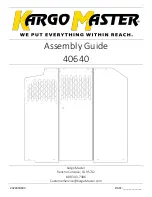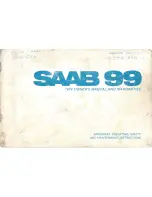Normal Occupant Weight: The number of occupants a
vehicle is designed to seat multiplied by 150 pounds
(68 kg). See
Loading Your Vehicle on page 4-51.
Occupant Distribution: Designated seating positions.
Outward Facing Sidewall: The side of a asymmetrical
tire that has a particular side that faces outward
when mounted on a vehicle. The side of the tire that
contains a whitewall, bears white lettering or bears
manufacturer, brand and or model name molding that is
higher or deeper than the same moldings on the
other sidewall of the tire.
Passenger (P-Metric) Tire: A tire used on passenger
cars and some light duty trucks and multipurpose
vehicles.
Recommended Inflation Pressure: Vehicle
manufacturer’s recommended tire inflation pressure and
shown on the tire placard. See
Inflation - Tire Pressure
on page 5-63 and Loading Your Vehicle on page 4-51.
Radial Ply tire: A pneumatic tire in which the ply cords
that extend to the beads are laid at 90 degrees to the
centerline of the tread.
Rim: A metal support for a tire and upon which the tire
beads are seated.
Sidewall: The portion of a tire between the tread and
the bead.
Speed Rating: An alphanumeric code assigned to a
tire indicating the maximum speed at which a tire
can operate.
Traction: The friction between the tire and the road
surface. The amount of grip provided.
Tread: The portion of a tire that comes into contact
with the road.
Treadwear Indicators: Narrow bands, sometimes
called “wear bars,” that show across the tread of a tire
when only 2/32 inch of tread remains. See
When It
Is Time for New Tires on page 5-66.
UTQGS: Uniform Tire Quality Grading Standards, a tire
information system that provides consumers with
ratings for a tire’s traction, temperature and treadwear.
Ratings are determined by tire manufacturers using
government testing procedures. The ratings are molded
into the sidewall of the tire. See
Uniform Tire Quality
Grading on page 5-68.
Vehicle Capacity Weight: The number of designated
seating positions multiplied by 150 lbs. (68 kg) plus
the rated cargo load. See
Loading Your Vehicle
on page 4-51.
Vehicle Maximum Load on the Tire: Load on an
individual tire due to curb weight, accessory weight,
occupant weight and cargo weight.
5-62
Summary of Contents for 2004 Tracker
Page 5: ...These are some examples of symbols you may find on your vehicle v ...
Page 6: ... NOTES vi ...
Page 17: ...Put someone on it Get it up to speed Then stop the vehicle The rider doesn t stop 1 11 ...
Page 104: ...Instrument Panel Overview 3 2 ...
Page 148: ... NOTES 3 46 ...
Page 224: ...Engine Compartment Overview When you open the hood on the engine you ll see 5 12 ...
Page 313: ...Engine Drive Belt Routing 5 101 ...
Page 314: ... NOTES 5 102 ...
Page 347: ...Maintenance Record cont d Date Odometer Reading Serviced By Maintenance Record 6 33 ...
Page 348: ...Maintenance Record cont d Date Odometer Reading Serviced By Maintenance Record 6 34 ...


















